



We create living spaces.
live.better
Heating & ventilation
# Healthy indoor climate






We create living spaces.
live.better
Heating & ventilation
# Healthy indoor climate













How do I avoid mould?
Tips against mould growth
Eliminating excessive humidity through regular
ventilation and also heating is the only way
to permanently prevent the development
of mould.
Leaving this humidity in the flat gives mould.
spores a foundation for growth.
Mould appears on walls, furniture, tile joints,
rubber seals and silicone joints as a greyish
black coating. In addition, there is a musty smell
in the flat.
How does humidity
develop in living
spaces?
Indoor plants are another source of humidity. A large
amount of the water from watering ends up in the
ambient air. Also, if many pets live in the flat, this
increases the level of humidity. Aquariums, indoor
fountains and humidifiers also increase humidity levels.
In a 3-person household, all the sources
of humidity come up to about 6 – 8 litres per day!
This becomes visible on wet window panes, mirrors
and wall tiles. This humidity must be transported
outside through ventilation.
If you still notice mould infestation in your
home, we will check whether there is a defect
in the structure of the building.
In this case, please contact your Customer Centre.
The smallest attack of mould should be removed
immediately!
Use the wbg Meteo card! With this card, you
can monitor both the humidity and the room
temperature. The Meteo card is available in our
Customer Centres. We will also be happy to send
it to you by post on request.
Guideline values for a healthy room climate are:
40 - 50% humidity at 18 - 22 degrees Celsius
room temperature. You can measure the level
of humidity and the room temperature with
a hygrometer and a thermometer.
Avoiding damp and mould
Heat and ventilate
all the rooms in your flat
sufficiently and regularly!






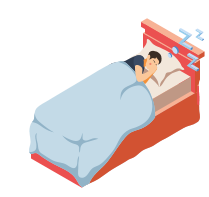
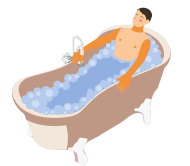
4
persons=
10
L
Water
a day



















We cause most of the humidity
ourselves: e.g. when showering,
bathing, cooking, drying laundry and
mopping the floor, as well as through
sweating and breathing. One person
releases approx. 1 litre of water into
the ambient air each night by breathing
during sleep!
Place furniture
5
–
10
cm
away from
the wall
Optimum
humidity:
40
–
50
%
Always place furniture at a distance of about 10 cm
from the outside wall and 5 cm from the inside
wall. This allows the air to circulate sufficiently
and prevents mould from forming on walls
and furniture.
What is the cause
of mould?
The spores of mould fungi, which always and quite
naturally float in the air, find the ideal breeding
ground on damp patches in the home
.










What is the
cause of
mould?
The spores of mould fungi,
which always and quite natu-
rally float in the air, find the
ideal breeding ground on
damp patches in the home
.
Eliminating excessive humidity through regular
ventilation and also heating is the only way
to permanently prevent the development
of mould.
Leaving this humidity in the flat gives mould.
spores a foundation for growth.
Mould appears on walls, furniture, tile joints,
rubber seals and silicone joints as a greyish
black coating. In addition, there is a musty smell
in the flat.
How does humidity
develop in living
spaces?
Indoor plants are another source of
humidity. A large amount of the water
from watering ends up in the ambient
air. Also, if many pets live in the flat,
this increases the level of humidity.
Aquariums, indoor fountains and
humidifiers also increase
humidity levels.
In a 3-person household, all the sources
of humidity come up to about 6 – 8 litres
per day! This becomes visible on wet
window panes, mirrors and wall tiles.
This humidity must be transported
outside through ventilation.
Avoiding damp and mould








4
persons=
10
L
Water
a day









We cause most of the humidity
ourselves: e.g. when showering,
bathing, cooking, drying laundry and
mopping the floor, as well as through
sweating and breathing. One person
releases approx. 1 litre of water into
the ambient air each night by breathing
during sleep!








Handling the heating
correctly
Operation of the thermostatic valves
Living rooms: if the air quality is poor (“it smells”),
ventilation with the windows fully open is recom-
mended. In addition, you should regularly check
the humidity with a hygrometer. If you wear
glasses and your lenses steam up when you enter
the flat, it is definitely time to ventilate the flat.
Bedrooms: if the window remains closed at night,
you should ventilate the room with a wide open
window right after you get up.
Kitchens/bathrooms: a lot of humidity can
develop in these rooms in a short period of time,
e.g. when you take a shower or bath, when you
cook food and even when you mop floors.
Ventilate these “humidity peaks” away directly.
Keep the room doors closed whilst you are taking
a shower/bath or cooking food. Open a window
during or immediately after showering or cooking.
When the wall tiles, window panes, mirror or floor
are dry, you can stop ventilating.



Proper heating and ventilation saves energy costs
and gives mould no chance. Your living climate is
determined by the temperature in your flat, as well
as by the humidity. Heating and ventilation influence
each other. If you observe the following tips for
heating, you can achieve an excellent air quality –
and save heating costs at the same time.
Most of the radiators in our flats have thermostatic
valves. The numbers 1 to 5 are on the handwheel
for setting the correct room temperature. They relate
to the following reference values:
Therefore, regulate the temperature in cooler
rooms separately with the radiator as well.
Thermostatic valves require direct contact with
the air in the room. Only then can they respond
instantly and correctly. Curtains or furniture (including
parts of built-in kitchens) that are situated in front
of the radiator lead to a build-up of heat. The valve
responds to this by shutting down the hot water
supply, as it receives the signal that the room
temperature has been reached. Then the room
is not heated.


Keep the doors closed whilst cooking or taking
a shower or bath, in order to prevent the water
vapour from spreading into other rooms. Then
ventilate the room sufficiently immediately.
Make use of available laundry areas or drying rooms.
An alternative is a tumble dryer (condensate dryer).
If you do dry laundry in your flat, however, you should
also ventilate it. During this time, keep the room door
closed. The heating should be on.
Control the humidity with a hygrometer.



Do not try to skimp on heating!
Ensure that your rooms are sufficiently heated.
If you heat too little, you risk damp walls that
promote the growth of mould. You should not
leave any room unheated – also out of solidarity
with your fellow tenants. You also need more
heat energy to heat up cold rooms and walls
again.
Keep the doors to less heated rooms closed.
Do not try to heat cool rooms with the air from
warmer rooms. Not only heat, but also humidity,
gets into the cool room as a result of this. The
relative humidity rises and facilitates the growth
of mould.


Ventilate several times a day for between 5 and
10 minutes. Even when it gets colder outside, you
should not neglect ventilating. The colder the
outside temperature, the shorter the duration of
the ventilation should be. However, this should
not be less than 5 minutes.
Keep interior doors open when ventilating with
the windows fully open: if you open other
windows in the flat at the same time, cross
ventilation will result in a much greater air
exchange.
Open the window completely for ventilation –
window sills should therefore be kept as free as
possible from flowers and other objects.
Tilting alone is not enough, as this does not allow
a sufficient exchange of air!




Number
1
approx.
10
°
C
Number
2
approx.
16°
C
Number
3
approx.
18°
C



Number
4
approx.
20°
C
Number
5
m
axim
al


Proper ventilation and heating = cost savings
Tips for heating
20°C
24°C
Living room
Kitchen
Bedroom
Children's room
Bathroom





A modern heating system is designed to reach
the following room temperatures:
Tips for ventilating






When ventilating,
keep windows
fully open
Tilting is not
enough!
Ventilating
individual rooms
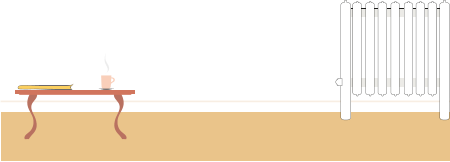
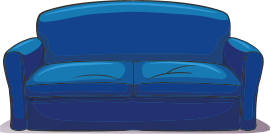





How do I avoid
mould?
Tips against
mould growth
If you still notice mould infestation in your
home, we will check whether there is a defect
in the structure of the building.
In this case, please contact your Customer Centre.
The smallest attack of mould should be removed
immediately!
Use the wbg Meteo card! With this card, you
can monitor both the humidity and the room
temperature. The Meteo card is available in our
Customer Centres. We will also be happy to send
it to you by post on request.
R
ichtwerte
für
ein
gesundes
Raum-
klima
sind:
40
- 50
%
Luftfeuchtigkeit
bei
18
-
22
Grad
Cels
ius Raumtem-
peratur.
Den
Grad
der
Luftfeucht
igkeit
und
der
Raumtemperatur
kö
nnen
Sie
mit
einem Hygrometer
und
Thermo-
meter
me
ss
en.
Heat and ventilate
all the rooms in your flat
sufficiently and regularly!










Place furniture
5
–
10
cm
away from
the wall
Optimum
humidity:
40
–
50
%
Always place furniture at a
distance of about 10 cm
from the outside wall and
5 cm from the inside
wall. This allows the air
to circulate sufficiently
and prevents mould
from forming on walls
and furniture.

You can find more
information on the
topic of “House rules”
here




Lowering the heating
at night to save energy
It is a legal requirement that heating systems be equipped with a night temperature lowering function. The temperature of the hot water adjusts to the outside temperature. The higher the outside temperature, the colder the hot water gets. The correct room temperature is nevertheless reached. When the outside temperature rises, the radiator may therefore only feel lukewarm. This is not a malfunction!Thermostatic valves
Thermostatic valves require direct contact with the air in the room. Only then can they respond instantly and correctly. Therefore, make sure that curtains or furniture are not in front of the radiator, as this leads to a build-up of heat. The valve responds to this by shutting down the hot water supply, as it receives the signal that the room temperature has been reached. This can drive up your heating costs! If you are going to be away for a longer period of time, make sure that the handwheel of your heating system is at least set to the ice crystal symbol. This setting serves as a frost monitor and prevents the radiator from freezing. Modern radiators mean that you no longer have to turn down the handwheel when ventilating the room. However, the fresh air should only be let in for a period of five to ten minutes. Otherwise there is a risk of severe heat loss !Underfloor heating
In addition, most of our systems reduce the hot
water supply temperature between 11 pm and
5 am. As a result, the room temperature may
drop. This is completely normal and is not
a defect.
Please do not immediately infer the temperature
in the room from the surface temperature of
the radiator and do not immediately question
whether your radiator is functioning properly.
Modern radiators are designed to make optimal
use of the hot water. Thus – depending on
the weather – they may only be really hot in the
immediate proximity of the thermostatic valve
and only be lukewarm at the outlet pipe. This is an
indication that the radiator is making optimal use
of the energy.
The radiators do not have a thermostatic valve.
Instead, the radiators can be operated by means
of a black handwheel. Since this handwheel
does not have a numerical scale for simplified
adjustment, a delicate touch is required.
When you go to work in the morning, do not turn
the heaters off. This will prevent walls from cooling
down and condensation and mould from forming.
So, leave the heating on at a constant level –
this will also save you heating costs!
Single-pipe heating
In a single-pipe heating system, hot water flows through the radiators one after the other in a ring pipe. In each flat there is usually one radiator through which the heating is “switched on” in the entire flat. Only when this “main radiator” is turned up does heating power reach the adjoining rooms.
Once set, the underfloor heating regulates
itself to a large extent. However, it reacts very
slowly. This means that it takes at least 1 hour to
raise the room temperature by 1 °C. Windows that
are left open for a long time quickly cool down the
flat. Consequently, the underfloor heating needs
a longer time to heat up the flat again afterwards.
Therefore, observe the most important principles:
•
Only ventilate with the windows fully open
briefly and as crosswise as possible
•
Due to the inertia of the system, frequent
adjustment of the room controller (e.g. several
times a day) is not advisable
•
Do not lay large carpets on the floors (or only
carpets specially suited for underfloor heating)
•
Drilling holes in floors is prohibited
Proper handling of your heatingg














You need a
delicate
touch for
single-pipe
heating systems
Minimum
thermostat setting
Modern underfloor heating systems are
particularly efficient. Thanks to well-insulated
building shells, very little thermal heat is needed
and the underfloor heating can be operated at a
very low temperature level.
The temperature of the floor is higher than the
room temperature. However, depending on the
floor covering and footwear, you do not feel the
heat directly, as is the case with old, overheated
underfloor heating systems. The reason for this
is that one's own body heat, especially of the
surface of the feet, is higher than the temperature
of the heating system. Yet even if you don't feel
the heat directly, it heats the room to comfortable
temperatures.


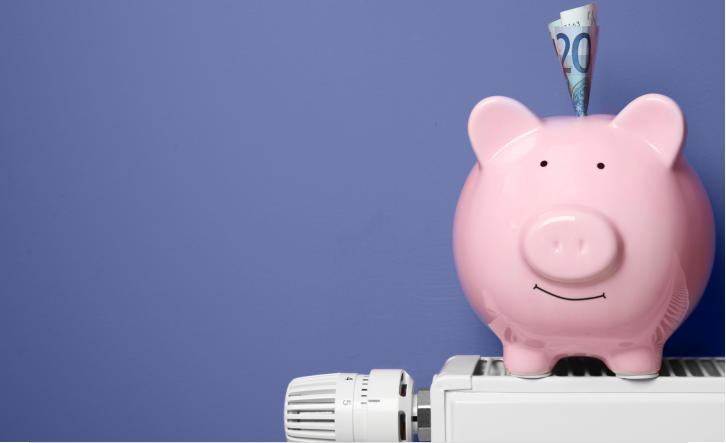





Handling the
heating correctly
Operation of the thermostatic valves
Proper heating and ventilation saves energy costs
and gives mould no chance. Your living climate
is determined by the temperature in your flat,
as well as by the humidity. Heating and ventilation
influence each other. If you observe the following
tips for heating, you can achieve an excellent air
quality – and save heating costs at the same time.
Most of the radiators in our flats have
thermostatic valves. The numbers 1 to 5
are on the handwheel for setting the
correct room temperature. They relate to
the following reference values:
Therefore, regulate the temperature in
cooler rooms separately with the radi-
ator as well
.
Thermostatic valves require direct
contact with the air in the room.
Only then can they respond instantly and
correctly. Curtains or furniture (including
parts of built-in kitchens) that are situated
in front of the radiator lead to a build-up
of heat. The valve responds to this by
shutting down the hot water supply, as it
receives the signal that the room tempera-
ture has been reached. Then the room is
not heated.


•
Do not try to skimp on heating!
Ensure that your rooms are sufficiently
heated. If you heat too little, you risk damp
walls that promote the growth of mould. You
should not leave any room unheated – also
out of solidarity with your fellow tenants. You
also need more heat energy to heat up cold
rooms and walls again.
•
Keep the doors to less heated rooms closed.
Do not try to heat cool rooms with the air
from warmer rooms. Not only heat, but also
humidity, gets into the cool room as a result
of this. The relative humidity rises and
facilitates the growth of mould.
Number 1 approx. 10°C
Number 2 approx. 16°C
Number 3 approx. 18°C



Number 4 approx. 20°C
Number 5 maximum


Proper ventilation & heating
=
cost savings
Tips
for
heating
20°C
24°C
Wohnzimmer
Küche
Sch
lafzimmer
Kinderzimmer
Bad





Eine
modern
e
Heizung
sa
nlage
i
s
t
s
o
a
u
sgelegt
,
das
s f
o
lgende
Raumtemperaturen
e
rreicht
werde
n:
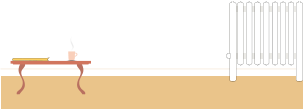




Living rooms:
if the air quality is poor
(“it smells”), ventilation with the windows fully
open is recommended. In addition, you should
regularly check the humidity with a hygrometer.
If you wear glasses and your lenses steam up
when you enter the flat, it is definitely time
to ventilate the flat.
Bedrooms: if the window remains closed at night, you should ventilate the room
with a wide open window right after you get up.


Keep the doors closed whilst cooking or
taking a shower or bath, in order to prevent
the water vapour from spreading into other
rooms. Then ventilate the room sufficiently
immediately.
Make use of available laundry areas or
drying rooms. An alternative is a tumble
dryer (condensate dryer). If you do dry
laundry in your flat, however, you should
also ventilate it. During this time, keep the
room door closed. The heating should be on.
Control the humidity with a hygrometer.



Ventilate several times a day for between
5 and 10 minutes. Even when it gets colder
outside, you should not neglect ventilating.
The colder the outside temperature, the
shorter the duration of the ventilation
should be. However, this should not be
less than 5 minutes.
Keep interior doors open when ventilating
with the windows fully open: if you open
other windows in the flat at the same time,
cross-ventilation will result in a much greater
air exchange.
Open the window completely for venti-
lation – window sills should therefore be
kept as free as possible from flowers and
other objects.
Tilting alone is not enough, as this does
not allow a sufficient exchange of air!




Tips for
ventilating






When ventilating,
keep windows
fully open
Tilting is not
enough!
Ventilating
individual rooms
Kitchens/bathrooms:
a lot of humidity can develop in these rooms in a short
period of time, e.g. when you take a shower or bath, when you cook food and
even when you mop floors. Ventilate these “humidity peaks” away directly. Keep
the room doors closed whilst you are taking a shower/bath or cooking food. Open
a window during or immediately after showering or cooking. When the wall tiles,
window panes, mirror or floor are dry, you can stop ventilating.














How do I avoid mould?
Tips against mould growth
Eliminating excessive humidity through regular
ventilation and also heating is the only way
to permanently prevent the development
of mould.
Leaving this humidity in the flat gives mould.
spores a foundation for growth.
Mould appears on walls, furniture, tile joints,
rubber seals and silicone joints as a greyish
black coating. In addition, there is a musty smell
in the flat.
How does humidity
develop in living
spaces?
Indoor plants are another source of humidity. A large
amount of the water from watering ends up in the
ambient air. Also, if many pets live in the flat, this
increases the level of humidity. Aquariums, indoor
fountains and humidifiers also increase humidity levels.
In a 3-person household, all the sources
of humidity come up to about 6 – 8 litres per day!
This becomes visible on wet window panes, mirrors
and wall tiles. This humidity must be transported
outside through ventilation.
If you still notice mould infestation in your
home, we will check whether there is a defect
in the structure of the building.
In this case, please contact your Customer Centre.
The smallest attack of mould should be removed
immediately!
Use the wbg Meteo card! With this card, you
can monitor both the humidity and the room
temperature. The Meteo card is available in our
Customer Centres. We will also be happy to send
it to you by post on request.
Guideline values for a healthy room climate are:
40 - 50% humidity at 18 - 22 degrees Celsius
room temperature. You can measure the level
of humidity and the room temperature with
a hygrometer and a thermometer.
Avoiding damp and mould
Heat and ventilate
all the rooms in your flat
sufficiently and regularly!








4
persons=
10
L
Water
a day



















We cause most of the humidity
ourselves: e.g. when showering,
bathing, cooking, drying laundry and
mopping the floor, as well as through
sweating and breathing. One person
releases approx. 1 litre of water into
the ambient air each night by breathing
during sleep!
Place furniture
5
–
10
cm
away from
the wall
Optimum
humidity:
40
–
50
%
Always place furniture at a distance of about 10 cm
from the outside wall and 5 cm from the inside
wall. This allows the air to circulate sufficiently
and prevents mould from forming on walls
and furniture.
What is the cause
of mould?
The spores of mould fungi, which always and quite
naturally float in the air, find the ideal breeding
ground on damp patches in the home
.

You can find more
information on the
topic of “House
rules” here:



Lowering the
heating at night
to save energy
It is a legal requirement that heating systems be equipped with a night tempe- rature lowering function. The tempera- ture of the hot water adjusts to the outside temperature. The higher the outside temperature, the colder the hot water gets. The correct room temperature is never- theless reached. When the outside temperature rises, the radiator may therefore only feel lukewarm. This is not a malfunction!Thermostatic valve
Thermostatic valves require direct contact with the air in the room. Only then can they respond instantly and correctly. Therefore, make sure that curtains or furniture are not in front of the radiator, as this leads to a build-up of heat. The valve responds to this by shutting down the hot water supply, as it receives the signal that the room temperature has been reached. This can drive up your heating costs! If you are going to be away for a longer period of time, make sure that the handwheel of your heating system is at least set to the ice crystal symbol. This setting serves as a frost monitor and prevents the radiator from freezing. Modern radiators mean that you no longer have to turn down the handwheel when ventilating the room. However, the fresh air should only be let in for a period of five to ten minutes. Otherwise there is a risk of severe heat loss!
In addition, most of our systems reduce
the hot water supply temperature
between 11 pm and 5 am. As a result,
the room temperature may drop.
This is completely normal and is
not a defect.
Please do not immediately infer the
temperature in the room from the
surface temperature of the radiator and
do not immediately question whether
your radiator is functioning properly.
Modern radiators are designed to
make optimal use of the hot water.
Thus – depending on the weather – they
may only be really hot in the immediate
proximity of the thermostatic valve and
only be lukewarm at the outlet pipe. This
is an indication that the radiator is
making optimal use of the energy.
Proper handling of your heating







Minimum
thermostat setting









Handling the heating
correctly
Operation of the thermostatic valves
Living rooms: if the air quality is poor (“it smells”),
ventilation with the windows fully open is recom-
mended. In addition, you should regularly check
the humidity with a hygrometer. If you wear
glasses and your lenses steam up when you enter
the flat, it is definitely time to ventilate the flat.
Bedrooms: if the window remains closed at night,
you should ventilate the room with a wide open
window right after you get up.
Kitchens/bathrooms: a lot of humidity can
develop in these rooms in a short period of time,
e.g. when you take a shower or bath, when you
cook food and even when you mop floors.
Ventilate these “humidity peaks” away directly.
Keep the room doors closed whilst you are taking
a shower/bath or cooking food. Open a window
during or immediately after showering or cooking.
When the wall tiles, window panes, mirror or floor
are dry, you can stop ventilating.



Proper heating and ventilation saves energy costs
and gives mould no chance. Your living climate is
determined by the temperature in your flat, as well
as by the humidity. Heating and ventilation influence
each other. If you observe the following tips for
heating, you can achieve an excellent air quality –
and save heating costs at the same time.
Therefore, regulate the temperature in cooler
rooms separately with the radiator as well.
Thermostatic valves require direct contact with
the air in the room. Only then can they respond
instantly and correctly. Curtains or furniture (including
parts of built-in kitchens) that are situated in front
of the radiator lead to a build-up of heat. The valve
responds to this by shutting down the hot water
supply, as it receives the signal that the room
temperature has been reached. Then the room
is not heated.


Do not try to skimp on heating!
Ensure that your rooms are sufficiently heated.
If you heat too little, you risk damp walls that
promote the growth of mould. You should not
leave any room unheated – also out of solidarity
with your fellow tenants. You also need more
heat energy to heat up cold rooms and walls
again.
Keep the doors to less heated rooms closed.
Do not try to heat cool rooms with the air from
warmer rooms. Not only heat, but also humidity,
gets into the cool room as a result of this. The
relative humidity rises and facilitates the growth
of mould.


Number
1
approx.
10
°
C
Number
2
approx.
16°
C
Number
3
approx.
18°
C



Number
4
approx.
20°
C
Number
5
m
axim
al


Proper ventilation and heating = cost savings
Tips for heating
20°C
24°C
Living room
Kitchen
Bedroom
Children's room
Bathroom





A modern heating system is designed to reach
the following room temperatures:






When ventilating,
keep windows
fully open
Tilting is not
enough!
Ventilating
individual rooms




Most of the radiators in our flats have thermostatic
valves. The numbers 1 to 5 are on the handwheel
for setting the correct room temperature. They relate
to the following reference values:

Keep the doors closed whilst cooking or taking
a shower or bath, in order to prevent the water
vapour from spreading into other rooms. Then
ventilate the room sufficiently immediately.
Make use of available laundry areas or drying rooms.
An alternative is a tumble dryer (condensate dryer).
If you do dry laundry in your flat, however, you should
also ventilate it. During this time, keep the room door
closed. The heating should be on.
Control the humidity with a hygrometer.



Ventilate several times a day for between 5 and
10 minutes. Even when it gets colder outside, you
should not neglect ventilating. The colder the
outside temperature, the shorter the duration of
the ventilation should be. However, this should
not be less than 5 minutes.
Keep interior doors open when ventilating with
the windows fully open: if you open other
windows in the flat at the same time, cross
ventilation will result in a much greater air
exchange.
Open the window completely for ventilation –
window sills should therefore be kept as free as
possible from flowers and other objects.
Tilting alone is not enough, as this does not allow
a sufficient exchange of air!




Tips for ventilating


Underfloor heating
Single-pipe heating
In a single-pipe heating system, hot water flows through the radiators one after the other in a ring pipe. In each flat there is usually one radiator through which the heating is “switched on” in the entire flat. Only when this “main radiator” is turned up does heating power reach the adjoining rooms. The radiators do not have a thermos- tatic valve. Instead, the radiators can be operated by means of a black handwheel.
This means that it takes at least 1 hour to
raise the room temperature by 1 °C.
Windows that are left open for a long time
quickly cool down the flat. Consequently,
the underfloor heating needs a longer
time to heat up the flat again afterwards.
Therefore, observe the most
important principles
:
Only ventilate with the windows
fully open briefly and as crosswise
as possible
Due to the inertia of the system, frequent
adjustment of the room controller
(e.g. several times a day) is not advisable
Do not lay large carpets on the floors
(or only carpets specially suited for
underfloor heating)
Drilling holes in floors
is prohibited











You need a
delicate
touch for
single-pipe
heating systems
Modern underfloor heating systems
are particularly efficient. Thanks to
well-insulated building shells, very
little thermal heat is needed and the
underfloor heating can be operated
at a very low temperature level.
The temperature of the floor is higher
than the room temperature. However,
depending on the floor covering and
footwear, you do not feel the heat
directly, as is the case with old, over-
heated underfloor heating systems.
The reason for this is that one's own
body heat, especially of the surface of
the feet, is higher than the temperature
of the heating system. Yet even if you
don't feel the heat directly, it heats the
room to comfortable temperatures.
Once set, the underfloor heating
regulates itself to a large extent.
However, it reacts very slowly.
Since this handwheel does not have a
numerical scale for simplified adjust-
ment, a delicate touch is required.
When you go to work in the morning,
do not turn the heaters off. This will
prevent walls from cooling down and
condensation and mould from
forming. So, leave the heating on
at a constant level – this will also
save you heating costs!
You can find more
information on the
topic of “House rules”
here




Lowering the heating
at night to save energy
It is a legal requirement that heating systems be equipped with a night temperature lowering function. The temperature of the hot water adjusts to the outside temperature. The higher the outside temperature, the colder the hot water gets. The correct room temperature is nevertheless reached. When the outside temperature rises, the radiator may therefore only feel lukewarm. This is not a malfunction!Thermostatic valves
Thermostatic valves require direct contact with the air in the room. Only then can they respond instantly and correctly. Therefore, make sure that curtains or furniture are not in front of the radiator, as this leads to a build-up of heat. The valve responds to this by shutting down the hot water supply, as it receives the signal that the room temperature has been reached. This can drive up your heating costs! If you are going to be away for a longer period of time, make sure that the handwheel of your heating system is at least set to the ice crystal symbol. This setting serves as a frost monitor and prevents the radiator from freezing. Modern radiators mean that you no longer have to turn down the handwheel when ventilating the room. However, the fresh air should only be let in for a period of five to ten minutes. Otherwise there is a risk of severe heat loss !Underfloor heating
In addition, most of our systems reduce the hot
water supply temperature between 11 pm and
5 am. As a result, the room temperature may
drop. This is completely normal and is not
a defect.
Please do not immediately infer the temperature
in the room from the surface temperature of
the radiator and do not immediately question
whether your radiator is functioning properly.
Modern radiators are designed to make optimal
use of the hot water. Thus – depending on
the weather – they may only be really hot in the
immediate proximity of the thermostatic valve
and only be lukewarm at the outlet pipe. This is an
indication that the radiator is making optimal use
of the energy.
The radiators do not have a thermostatic valve.
Instead, the radiators can be operated by means
of a black handwheel. Since this handwheel
does not have a numerical scale for simplified
adjustment, a delicate touch is required.
When you go to work in the morning, do not turn
the heaters off. This will prevent walls from cooling
down and condensation and mould from forming.
So, leave the heating on at a constant level –
this will also save you heating costs!
Single-pipe heating
In a single-pipe heating system, hot water flows through the radiators one after the other in a ring pipe. In each flat there is usually one radiator through which the heating is “switched on” in the entire flat. Only when this “main radiator” is turned up does heating power reach the adjoining rooms.
Once set, the underfloor heating regulates
itself to a large extent. However, it reacts very
slowly. This means that it takes at least 1 hour to
raise the room temperature by 1 °C. Windows that
are left open for a long time quickly cool down the
flat. Consequently, the underfloor heating needs
a longer time to heat up the flat again afterwards.
Therefore, observe the most important principles:
•
Only ventilate with the windows fully open
briefly and as crosswise as possible
•
Due to the inertia of the system, frequent
adjustment of the room controller (e.g. several
times a day) is not advisable
•
Do not lay large carpets on the floors (or only
carpets specially suited for underfloor heating)
•
Drilling holes in floors is prohibited
Proper handling of your heatingg














You need a
delicate
touch for
single-pipe
heating systems
Minimum
thermostat setting
Modern underfloor heating systems are
particularly efficient. Thanks to well-insulated
building shells, very little thermal heat is needed
and the underfloor heating can be operated at a
very low temperature level.
The temperature of the floor is higher than the
room temperature. However, depending on the
floor covering and footwear, you do not feel the
heat directly, as is the case with old, overheated
underfloor heating systems. The reason for this
is that one's own body heat, especially of the
surface of the feet, is higher than the temperature
of the heating system. Yet even if you don't feel
the heat directly, it heats the room to comfortable
temperatures.





























